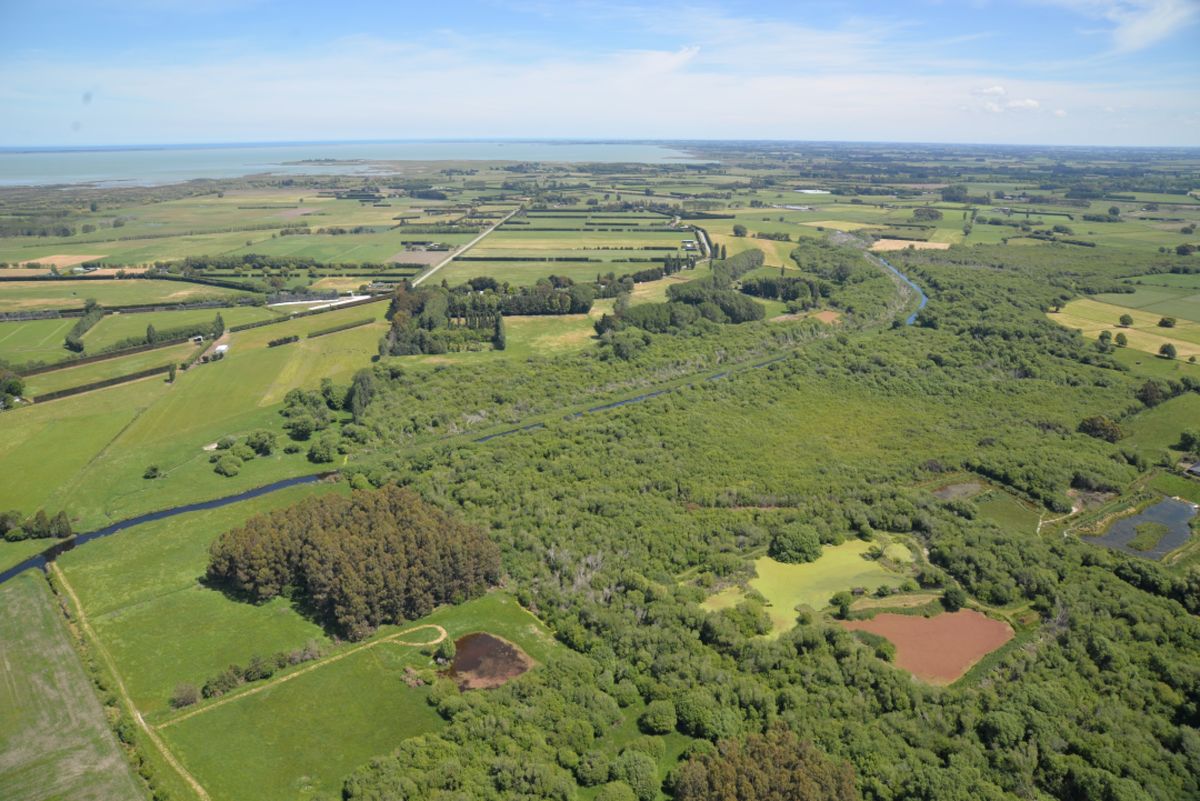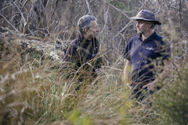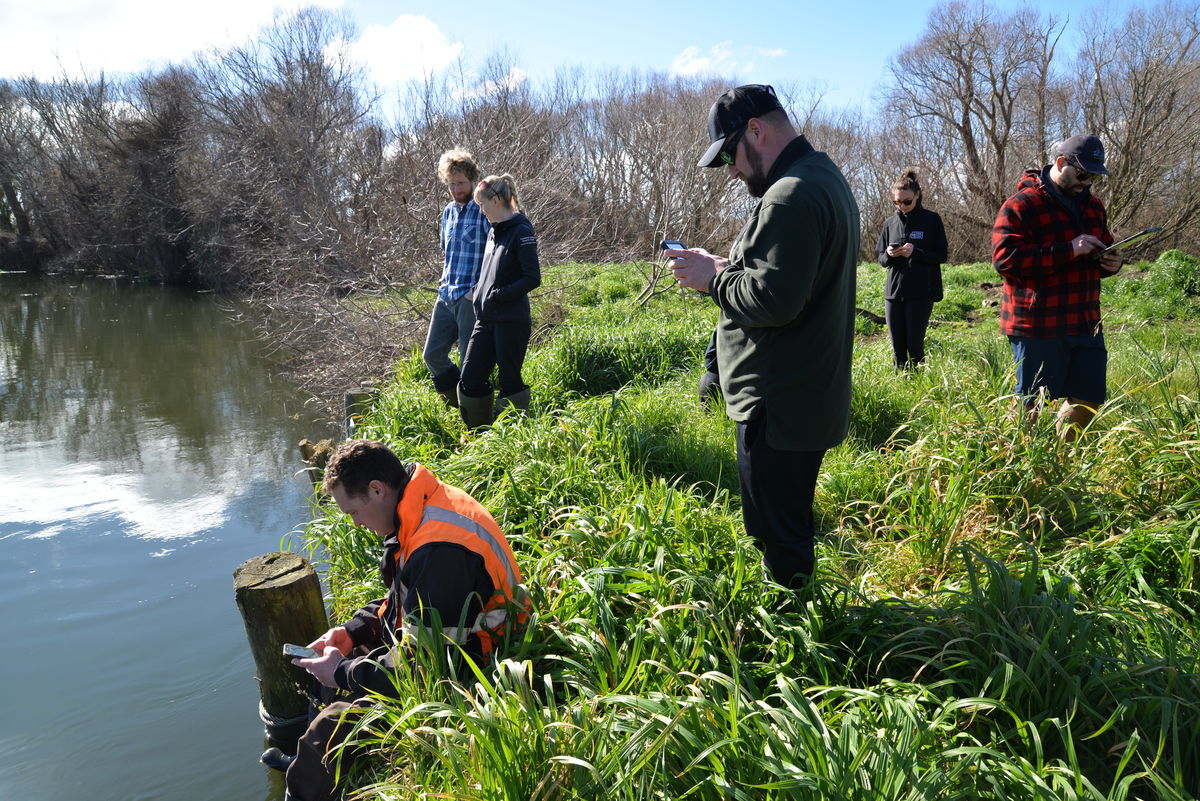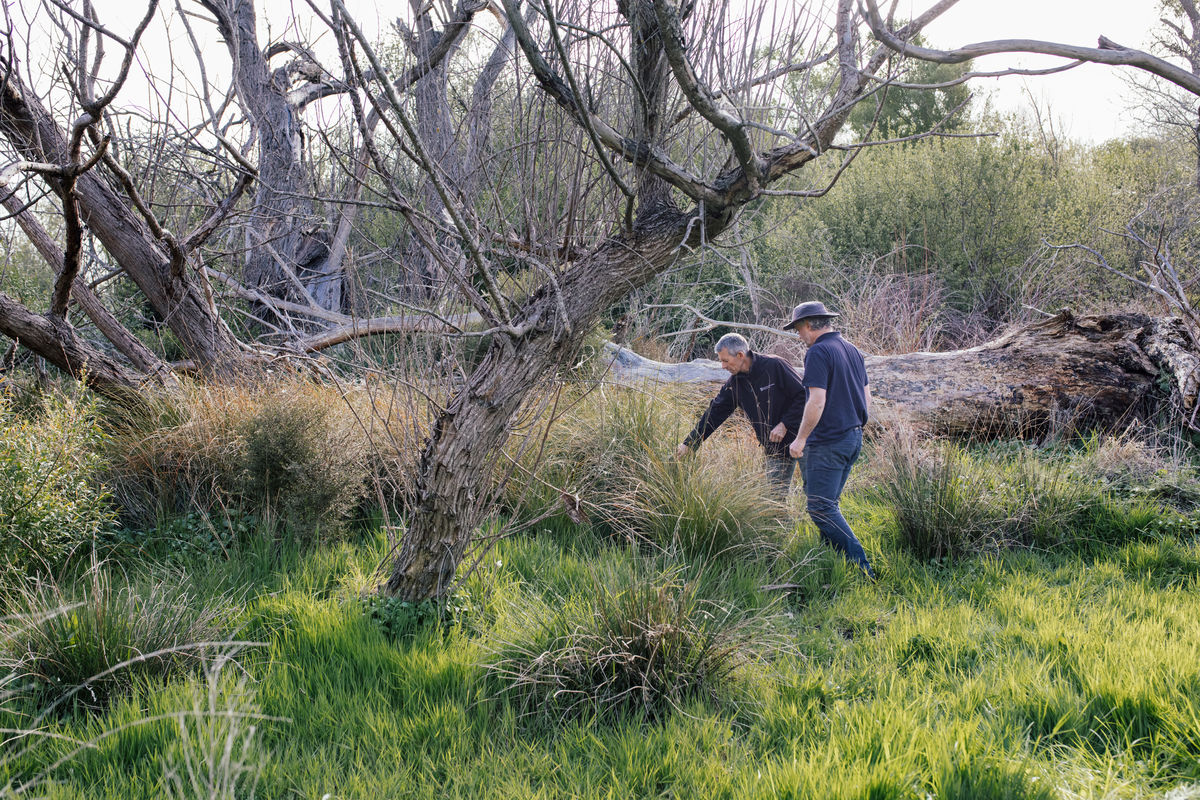
Tārerekautuku / Yarrs Lagoon
What is the problem?
Tārerekautuku/Yarrs Lagoon is a 70ha freshwater wetland reserve that adjoins the Ararira/LII River, a significant spring-fed tributary to Te Waihora/Lake Ellesmere in lowland Canterbury. But land drainage, habitat modification and weed invasion have degraded the wetland.
The reserve is administered by Selwyn District Council and located near Lincoln township on the low plains of Canterbury.
The Lagoon was once an open water body surrounded by low-lying swamp. It was a key mahinga kai (food gathering) site of Ngāi Tahu, and in particular the local hapū of Ngāi Te Ruahikihiki based at Taumutu. The lagoon linked a wider network of food gathering and settlement sites stretching from Taumutu and into Ōtautahi/Christchurch.
Land drainage from the mid to late 1800’s onwards transformed the open water 'lagoon' to swamp and marsh wetland habitat. The reserve is now dominated by introduced willow while the surrounding land is pasture. Despite these modifications, the reserve has a high diversity of indigenous species and remains one of the most significant freshwater wetland habitats in the Te Waihora catchment.
What is the project?
The project involved raising the profile of Tārerekautuku/Yarrs Lagoon and supporting Selwyn District Council to initiate wetland restoration.
Wetland reconstruction is extremely expensive, the rehabilitation of existing wetlands, even with degraded biodiversity is more cost-effective. Restoring the health and function of existing wetlands such as Tārerekautuku/Yarrs Lagoon, is a priority in the Ararira catchment. Living Water's aim for the catchment is to trial solutions that could transform the drain and water network into a healthy freshwater ecosystem in a productive agricultural landscape. Wetlands are integral to the health of Te Waihora and an obvious solution to realise the aim.


What was done?
Raising awareness of the wetland’s value
While raising awareness within the District Council seemed like a straight-forward task, it quickly became apparent that a biodiversity champion within the Council was needed. There was no biodiversity role within the Council at the time, so the project began with Living Water part-funding a Council Biodiversity Advisor role for two years. This enabled relationship building with Living Water and the community, sharing of knowledge and ideas and a momentum for action. The part-time role soon became a full-time permanent role funded by the Council and a second biodiversity position was later added by the Council.
The Council formed a local Wetland Care Group, created a page and links to resources on their website and, importantly, committed to the restoration of the wetland.
Assessing the wetland’s natural and cultural values
Little was known or ever recorded about the wetland’s values. In 2016 Living Water, in partnership with Lincoln University, funded an assessment of the fauna present to guide future restoration and conservation of native species. Following that in 2017 Living Water commissioned a scoping report on the wetland to inform the development of a Reserve Management Plan for the ecological restoration of the wetland. In 2020, the Council completed a draft Reserve Management Plan to ensure a strategic approach to the restoration and management of the Reserve.
Small-scale restoration efforts
An overarching theme for Living Water in all its focus catchments has been to trial solutions and tools to assess their effectiveness and merit for up-scaling. While waiting for an opportunity for the Council to secure significant resources for large-scale restoration, Living Water undertook small-scale restoration to demonstrate what was possible.
Drains bisected the Reserve in several locations. The drain margins were thick with mature grey and crack willow. This was periodically sprayed by the Council Drainage Committee responsible for drain management in the catchment. Waterway/drain margins had been sprayed in 2013 and it was noted that subsequent regeneration included an array of native wetland species along with weeds. Rather than allowing the weeds to overtake the natives and go through another cycle of aerial spraying to control willow, the willow and other weeds were controlled by careful ground-based techniques. This allowed the native canopy to develop and suppress the willow.
Multi-year large-scale restoration
What began as raising the Reserve’s profile finally became a publicly funded multi-year restoration effort in 2022 led by the Council with mana whenua and community support.
The Council with support from Living Water and other partners made a funding application to the Ministry for the Environment’s Freshwater Improvement Fund and received nearly $800,000 for a 4 year programme.
In 2023 contractors are busy with a range of restoration work which includes weed control within the reserve and on adjoining private land, animal pest control using traps and planting in small areas. Bridges have been installed over some of the key drains for easy contractor access, but it’s hoped that in the future a network of walking tracks will be developed to serve the growing recreational needs of residents in nearby Lincoln township.
Tārerekautuku - Yarrs Lagoon
What did Living Water learn from this project?
- As 90% of New Zealand’s wetlands have been drained and modified, protecting and enhancing those that remain is crucial for indigenous biodiversity and sustainable farming. This project was a great choice as a ‘quick win’ investment in the early stages of Living Water.
- Identifying and providing initial support for the Council built an unstoppable momentum that led to substantial public funding and community interest.
- Taking effective action requires a plan so the ecological and cultural assessments funded by Living Water at the beginning paved the way for further investment and community support.
- The health of Tārerekautuku/Yarrs Lagoon largely depends on the health of the Ararira catchment. Living Water’s investment at the Reserve has been complemented by its Catchment water network re-design project that aims to transform the way in which the drainage network is valued and managed.
- As Living Water is a fixed-term partnership, it was important that the gains were maintained in the long term through Council, community and tangata whenua action. That long-term commitment to managing Tārerekautuku/Yarrs Lagoon is falling into place.
Who could use this information?
District and Regional Councils, Land Managers, community groups, and catchment care groups.
Links to other resources
Selwyn District Council website
